The ‘Cursed Amethyst’, also known as the Delhi Purple Sapphire was incorrectly identified as a sapphire in the nineteenth century. This legendary gemstone remained hidden for three centuries beneath London’s Natural History Museum , before curator Peter Tandy removed the gem from its box to discover a curious note hidden beneath it telling a tragic, and at times bizarre, tale that has led to this stone being described as “trebly cursed”.
The Amethyst Curse
After the 1857 Indian Rebellion was quelled, the British Army sought to teach any future rebels a lesson and they systematically sacked and looted hundreds of shrines, temples, and palaces. British soldiers raided sacred chambers and stole many tons of ancient Indian treasures. One of these ransacked temples was the Temple of Indra in Cawnpore (Kanpur) which was dedicated to Indra, the Hindu god of war and thunderstorms, who rode on a white elephant’s back and carried a lightning bolt.
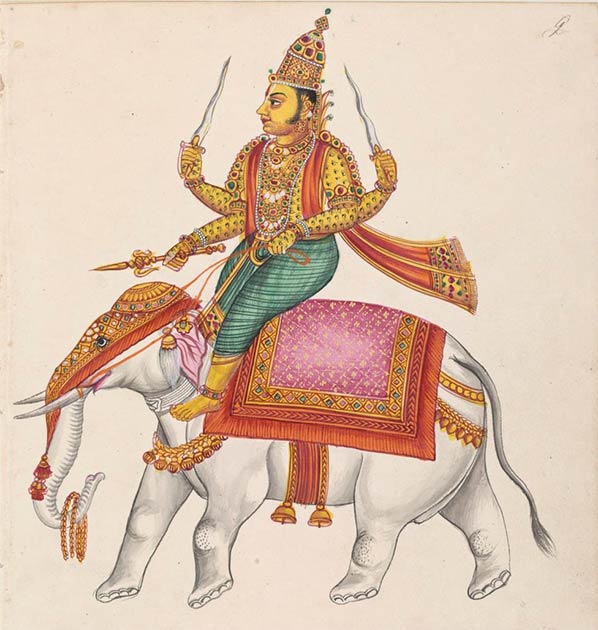
Indra, the Hindu god of war and thunderstorms. ( Public Domain )
It was during the Siege of Cawnpore that Bengal Cavalryman Colonel W. Ferris lifted the “purple sapphire,” (actually an amethyst) that he believed would secure his family’s future wealth. But no longer had the soldier returned to England when a string of financial misfortunes unfolded, and what’s more, every member of Ferris’ family was struck down with a range of serious illnesses.
This ‘apparent’ pattern of misery, misfortune, and destruction was also passed on to those who inherited the stone, for when Ferris’ son inherited the artifact and gave it to a friend, it is said that “out of the blue” he committed suicide. So began a series of obscure events which together have become known as the Amethyst Curse or the “Curse of the Delhi Purple Sapphire.”
Cast the Devil into the Sea
In 1890, Ferris’ son gave the stone to Edward Heron-Allen, a respected British polymath, writer, and scientist, who aside from the academic pursuit of translating Arabic literature also had a thing for the ‘art’ of palmistry. According to Economic Times, India , when Heron-Allen gave the stone to a singer friend, ”her voice was dead and gone, and she never sang again.”
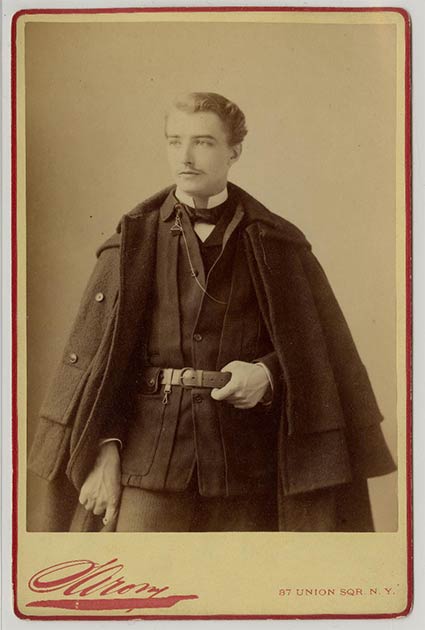
Edward Heron-Allen suffered from the supposed curse of the Delhi purple sapphire. ( Wake Forest University Library )
This disaster confirmed to Heron-Allen that the artifact was indeed devilish, and the story maintains he threw it into London’s Regent ’s Canal. While this is pretty hard to believe, the story goes: three months later a river-dredger recovered the purple stone and a dealer eventually gave it back to Heron-Allen, and the Natural History Museum says Heron-Allen described the amethyst as being, “cursed and stained with blood.”
Atlas Obscura say Heron-Allen attempted to “neutralize” the evil power of the cursed stone and had it “bound with a silver ring fashioned as a double-headed snake, and two amethyst scarab beetles beads” and he also inscribed the ring with the twelve symbols of the zodiac, before he locked it in his bank vault within seven sealed boxes.
Heron-Allen had instructed that exactly three years after his death, in 1943, his daughter should unlock each of the seven boxes and give the stone to the museum, with his note detailing the stone’s evil history. According to KOJewel, that note said “Whoever shall then open it, shall first read out this warning, and then do as he pleases with the jewel. My advice to him or her is to cast it into the sea.”
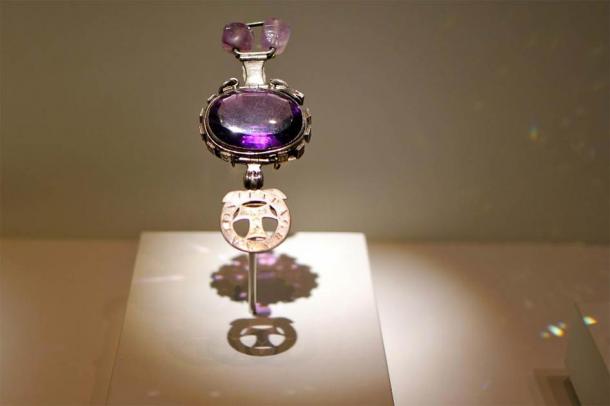
The jewel known as the Delhi purple sapphire, a.k.a. the cursed amethyst. (Sarah-Rose/ CC BY ND 2.0 )
“Belief” is the Supernatural Engine of All Curses
Fast forwarding to 2007, when the amethyst first went on display in the Natural History Museum, within the ring of silver with two scarab beetle beads, in a History Channel Museum Secrets video, Museum Curator Richard Savin said that when he and his wife had transported the Delhi purple sapphire from a symposium of Heron-Allen Society they drove through “the most amazing storm we ’d ever witnessed with lightning flashing on both sides of the car.”
The museum curator said his wife shouted, “throw that damn jewel away, you shouldn’t have brought it!” And if this weren’t enough to powerfully resurrect antique ideas about the stone being cursed, the curator said that every time he has attempted to attend a subsequent meeting he has become “violently ill,” – but he also admitted that this could “all be a coincidence.”
The structure of the curator’s last statement is very revealing and speaks volumes for what has most probably been going on here since the gem was stolen in India. Notice that even the Museum Curator tells the story of his “cursed” experiences and at the end he throws in that it might “all be a coincidence.”
In 2020, in the age of science, one should properly address such a situation in reverse, where the base assumption should be “this is all a coincidence,” but could possibly also be a curse. Can you see how the horse leads the cart here, and how a curse requires one key component to work, and that is “belief?”
Rise of the Fear Capitalists
Historically, curses were believed to have been formed in invocations, prayers, and rituals in which a desire for misfortune is aimed at another person, object, or place. According to skepdic.com, historically, curses “seem to have been a regular part of ancient cultures and may have been a way to frighten enemies and explain the apparent injustices of the world.”
While not a scrap of empirical evidence exists to suggest anyone has ever raised occult powers in order to inflict harm unto others, there are storehouses of files in psychologists’ basements providing evidence that people who “ believe” to have been cursed can bring grave misery into their existence as they exploit their belief. And this belief can cause victims to fall into traps such as ‘confirmation bias’ -where only the events and occurrences relating to their belief in the curse are given value, leading to the “believer” having strings of interconnected events relating to “their curse,” or “belief.”
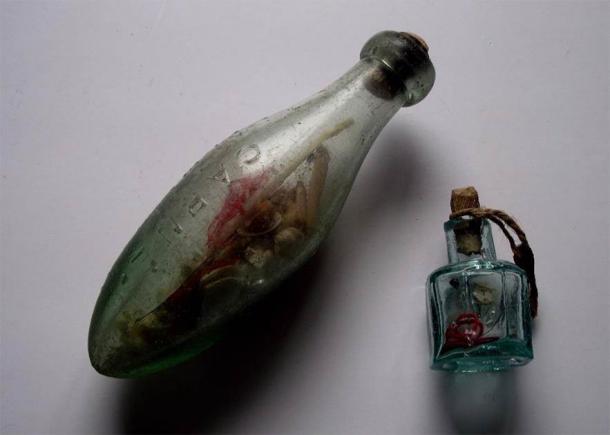
Witch bottles, created for the protection against curses. (Malcom Lidbury/ CC BY SA 3.0 )
Faith, and its sibling “belief”, are central archetypes in The Old Testament, and this paradigm changing book can be accurately described as an ancient “book of curses.” It is little wonder that in the Western world curses have so often been used to explain why bad things often happen to good people: “Oh, your father died young because he was cursed like your grandfather, because his grandfather stole a cow;” while underlying this tragedy might be a family history of coronary heart disease, about which little to nothing was known.
Furthermore, when terrible things occurred in history there were no medical books and most folk consulted their local holy men, who in turn consulted the Biblical “book of curses” for answers – which of course always had a supernatural basis. And in that old-world, where naivety was the default setting – in comparison to today’s world of scientific answers – the word “coincidence” didn’t exist. From this scientific black hole emerged a troupe of psychics, spirit-channelers, tea-leaf readers, and clairvoyants all offering cures to combat the effects of curses, of course, for what was never a “small” fee.
Top Image: The Delhi purple sapphire, aka the cursed amethyst. Source: © The Trustees of the Natural History Museum, London. OGL
By Ashley Cowie
Related posts:
Views: 0
 RSS Feed
RSS Feed

















 September 20th, 2020
September 20th, 2020  Awake Goy
Awake Goy 


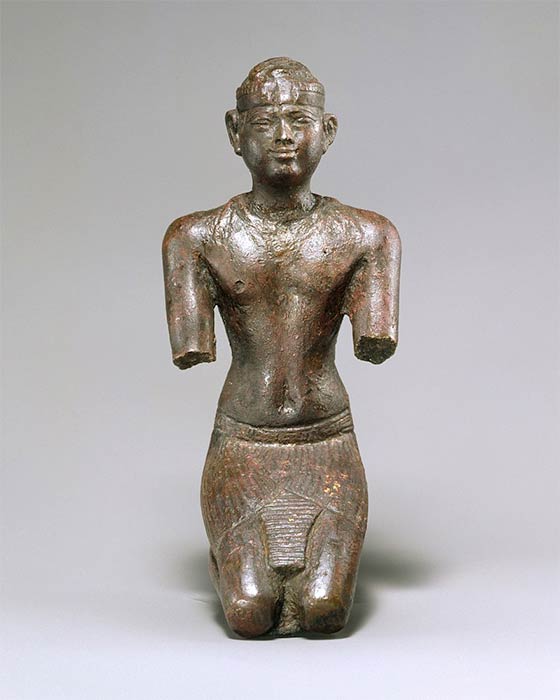


 Posted in
Posted in  Tags:
Tags: 
















